![も – Saying “Also” and “Too” in Japanese [JLPT N5]](http://hirakan.com/cdn/shop/articles/mo-also-too_99f908e6-78d0-4f82-8319-391ef42764bc.jpg?v=1763787251&width=1100)
も – Saying “Also” and “Too” in Japanese [JLPT N5]
Aktie
Quick Summary
- Meaning: The particle も means “also,” “too,” or “even.” It shows that something is the same as something mentioned before, or adds another similar item.
- How to Use: Put も after a word (usually a noun) to say that this thing is “also / too.”
Example:
- 弟も宇宙人です。
- Otouto mo uchuujin desu.
- My younger brother is also an alien.
Overview
The particle も is one of the first and most useful particles you will meet in Japanese. It is used when you want to say that something is the same as something already mentioned, or when you want to add another item to the story.
In English, this often becomes “also,” “too,” “as well,” or sometimes “even.”
Imagine you say:
- 兄は忍者です。
- Ani wa ninja desu.
- My older brother is a ninja.
If you now want to say that your sister is a ninja too, you can use も after “sister”:
- 妹も忍者です。
- Imouto mo ninja desu.
- My younger sister is also a ninja.
Here, も shows that both your older brother and younger sister are ninjas. You are adding another person to the same idea.
Some key points about も for beginners:
- も replaces は or が in a sentence. You do not use them together in the same spot.
- も usually comes right after a noun, or after a word with another particle in more advanced patterns (you will see this later).
- Context is important. In English, we choose between “also,” “too,” or “even,” but in Japanese, we just use も and let context give the nuance.
At the JLPT N5 level, the most important use is: “Xも = X also / X too.”
Structure / Formation
Basic Pattern
The simplest way to use も is with nouns.
- N + も
Here, N means any noun: a person, thing, place, time, and so on.
For example:
- 先生もゲームが好きです。
- Sensei mo geemu ga suki desu.
- The teacher also likes games.
If the sentence would normally use は after the noun, you simply switch は → も:
| Meaning | Pattern | Example (Japanese) | Romaji |
|---|---|---|---|
| Basic “X is Y.” | N は N です。 | 私は魔法使いです。 | Watashi wa mahoutsukai desu. |
| “X is also Y.” | N も N です。 | 友だちも魔法使いです。 | Tomodachi mo mahoutsukai desu. |
Translation of the examples above:
- I am a wizard.
- My friend is also a wizard.
Replacing は or が with も
At N5 level, you will most often put も where you would normally put は or が. You do not keep both.
General patterns:
- N は … → N も …
- N が … → N も …
Compare these pairs:
1) Using は → も
- ロボットは日本語を話します。
- Robotto wa Nihongo o hanashimasu.
- The robot speaks Japanese.
- 犬も日本語を話します。
- Inu mo Nihongo o hanashimasu.
- The dog also speaks Japanese.
2) Using が → も
- 妹がピアノをひきます。
- Imouto ga piano o hikimasu.
- My younger sister plays the piano.
- 兄もピアノをひきます。
- Ani mo piano o hikimasu.
- My older brother also plays the piano.
The meaning of the sentence stays almost the same, but も tells us that there is at least one more person or thing with the same action or state.
Common Beginner Patterns with も
1. Saying “I also … / Me too”
When you want to say “Me too” in Japanese, you usually repeat the verb and change the particle to も.
Pattern:
- Person + も + V
Example:
- 友だちは毎日空を飛びます。
- Tomodachi wa mainichi sora o tobimasu.
- My friend flies in the sky every day.
- 私も空を飛びます。
- Watashi mo sora o tobimasu.
- I also fly in the sky.
2. Saying “This also is … / This is … too”
You can add objects or things in the same way.
Pattern:
- N1 は N2 です。 (Base sentence)
- N3 も N2 です。 (Add another thing: N3 “also is” N2.)
Example:
- このお城は図書館です。
- Kono oshiro wa toshokan desu.
- This castle is a library.
- この地下室も図書館です。
- Kono chikashitsu mo toshokan desu.
- This basement is also a library.
Position of も in the Sentence
The basic rule: も goes directly after the word it is describing as “also / too.”
- If you want to say another person also does something, put も after the person.
- If you want to say another thing also has some quality, put も after that thing.
Compare:
- 先生も歌います。
- Sensei mo utaimasu.
- The teacher also sings.
Here, the focus is “teacher also (in addition to someone else) sings.” The word with も is what you are adding.
Useful Pattern Table (Beginner Level)
| Function | Pattern | Example (Japanese) | Romaji | English |
|---|---|---|---|---|
| “X is also Y.” | N1 も N2 です。 | このロボットも先生です。 | Kono robotto mo sensei desu. | This robot is also a teacher. |
| “X also V.” | N も V | おじいさんもダンスをします。 | Ojiisan mo dansu o shimasu. | Grandpa also dances. |
Quick Tips
- Do not combine は and も on the same noun. Say 私も, not 私はも.
- Think in two steps: first make a simple sentence, then decide what should be “also,” and put も after that word.
- At N5 level, focus on using も with simple patterns like N も N です and N も V. This will already cover a lot of everyday conversation.
Example Sentences
- ドラゴンも大学で日本語を勉強します。
- Doragon mo daigaku de Nihongo o benkyou shimasu.
- The dragon also studies Japanese at university.
- おばあさんもゲームセンターが好きです。
- Obaasan mo geemu sentaa ga suki desu.
- Grandma also likes the game arcade.
- このロボットも毎朝ヨガをします。
- Kono robotto mo mai asa yoga o shimasu.
- This robot also does yoga every morning.
- 先生もテストの前に少しドキドキします。
- Sensei mo tesuto no mae ni sukoshi dokidoki shimasu.
- The teacher also gets a little nervous before tests.
- 月もラーメンが好きじゃありません。
- Tsuki mo raamen ga suki ja arimasen.
- The moon also does not like ramen.
Quick Practice
(Answers and explanations are right under this section.)
Multiple-Choice
1. Choose the best sentence: “My little brother also likes curry.”
- A. 弟はカレーも好きです。(Otouto wa karee mo suki desu.)
- B. 弟もカレーが好きです。(Otouto mo karee ga suki desu.)
- C. 弟とカレーが好きです。(Otouto to karee ga suki desu.)
- D. 弟やカレーが好きです。(Otouto ya karee ga suki desu.)
2. You already said: 「祖父はロックを聞きます。」(Sofu wa rokku o kikimasu.) “Grandpa listens to rock.” Now choose the best sentence to say “Grandma also listens to rock.”
- A. おばあさんはロックを聞きます。(Obaasan wa rokku o kikimasu.)
- B. おばあさんもロックを聞きます。(Obaasan mo rokku o kikimasu.)
- C. おばあさんとロックも聞きます。(Obaasan to rokku mo kikimasu.)
- D. おばあさんがロックでも聞きます。(Obaasan ga rokku demo kikimasu.)
3. Choose the sentence that uses も correctly to mean “This robot also drinks coffee every morning.”
- A. このロボットは毎朝もコーヒーを飲みます。(Kono robotto wa mai asa mo koohii o nomimasu.)
- B. このロボットも毎朝コーヒーを飲みます。(Kono robotto mo mai asa koohii o nomimasu.)
- C. このロボットは毎朝コーヒーもを飲みます。(Kono robotto wa mai asa koohii mo o nomimasu.)
- D. このロボットは毎朝コーヒーと飲みます。(Kono robotto wa mai asa koohii to nomimasu.)
4. Choose the best sentence: “Cats like sushi too.”
- A. 猫は寿司もが好きです。(Neko wa sushi mo ga suki desu.)
- B. 猫や寿司が好きです。(Neko ya sushi ga suki desu.)
- C. 猫も寿司が好きです。(Neko mo sushi ga suki desu.)
- D. 猫は寿司でも好きです。(Neko wa sushi demo suki desu.)
5. You already said: 「今日は先生も来ます。」(Kyou wa sensei mo kimasu.) “Today, the teacher is also coming.” Now choose the best sentence to add: “The principal is coming too.”
- A. 校長はも来ます。(Kouchou wa mo kimasu.)
- B. 校長がも来ます。(Kouchou ga mo kimasu.)
- C. 校長と来ます。(Kouchou to kimasu.)
- D. 校長も来ます。(Kouchou mo kimasu.)
Spot-the-Error
6. One sentence below has a mistake with も. Which one is WRONG?
- A. 私もロボットです。(Watashi mo robotto desu.)
- B. 私はもロボットです。(Watashi wa mo robotto desu.)
- C. 友だちもロボットです。(Tomodachi mo robotto desu.)
7. One sentence below has a mistake with the position or use of も. Which one is WRONG?
- A. このバスも学校へ行きます。(Kono basu mo gakkou e ikimasu.)
- B. 犬も毎晩ニュースを見ます。(Inu mo maiban nyuusu o mimasu.)
- C. 私の兄はピザが好きもです。(Watashi no ani wa piza ga suki mo desu.)
Translation
8. Translate into Japanese using も: “I am a student. My friend is a student too.”
9. Translate into Japanese using も: “This planet is very cold. The moon is also very cold.”
10. Translate into Japanese using も: “My cat reads manga. My dog also reads manga every night.”
Answers and Explanations
- B. 弟もカレーが好きです。(Otouto mo karee ga suki desu.) — も comes after 弟 to show that “my little brother” is another person who likes curry.
- B. おばあさんもロックを聞きます。(Obaasan mo rokku o kikimasu.) — も replaces は to add “grandma” as another person who listens to rock.
- B. このロボットも毎朝コーヒーを飲みます。(Kono robotto mo mai asa koohii o nomimasu.) — も directly follows このロボット, the thing that is “also” doing the action.
- C. 猫も寿司が好きです。(Neko mo sushi ga suki desu.) — も shows that “cats” are another group that also likes sushi.
- D. 校長も来ます。(Kouchou mo kimasu.) — も correctly replaces は or が to say that the principal is also coming.
- B. 私はもロボットです。(Watashi wa mo robotto desu.) — は and も cannot both come after the same noun; it should be 私もロボットです。
- C. 私の兄はピザが好きもです。(Watashi no ani wa piza ga suki mo desu.) — も cannot go after 好き here; it should be 私の兄もピザが好きです。
- 私は学生です。友だちも学生です。(Watashi wa gakusei desu. Tomodachi mo gakusei desu.) — も after 友だち shows that the friend is “also” a student.
- この星はとても寒いです。月もとても寒いです。(Kono hoshi wa totemo samui desu. Tsuki mo totemo samui desu.) — も after 月 adds the moon as another thing that is very cold.
- 私の猫はマンガを読みます。犬も毎晩マンガを読みます。(Watashi no neko wa manga o yomimasu. Inu mo maiban manga o yomimasu.) — も after 犬 shows that the dog also reads manga, like the cat.
Related Posts
-
![と – Linking 'And', 'With', and Quotations in Japanese [JLPT N5]](//hirakan.com/cdn/shop/articles/to-and-with-quotation.jpg?v=1763265110&width=170)
と – Linking 'And', 'With', and Quotations in Japanese [JLPT N5]
Quick Summary Meaning: と links things like “A and B,” marks doing something with someone, and shows a quotation (“…,”...
-
![で – Marking Where and How an Action Happens in Japanese [JLPT N5]](//hirakan.com/cdn/shop/articles/de-where-how-action-happens.jpg?v=1763264973&width=170)
で – Marking Where and How an Action Happens in Japanese [JLPT N5]
Quick Summary Meaning: で marks the location where an action happens or the means/tool/method used to do something...
-
![へ – Marking Direction ‘Toward’ in Japanese [JLPT N5]](//hirakan.com/cdn/shop/articles/he-marking-direction.jpg?v=1762667986&width=170)
へ – Marking Direction ‘Toward’ in Japanese [JLPT N5]
Quick Summary Meaning: The particle へ marks direction or “toward” a place or person. It points where something is hea...
-
![に – Marking Time, Destinations, and Recipients in Japanese [JLPT N5]](//hirakan.com/cdn/shop/articles/ni-marking-destination.jpg?v=1762667846&width=170)
に – Marking Time, Destinations, and Recipients in Japanese [JLPT N5]
Quick Summary Meaning: The particle に marks a point in time (at/on), a destination you reach (to/into), or a target/r...
-
![の – Possession and Noun Linking in Japanese [JLPT N5]](//hirakan.com/cdn/shop/articles/no-possession-and-noun-linking.jpg?v=1761961297&width=170)
の – Possession and Noun Linking in Japanese [JLPT N5]
Quick Summary Meaning: Links two nouns to show possession, belonging, or description. Often reads as “’s” or “of....
-
![を – Marking the Direct Object in Japanese [JLPT N5]](//hirakan.com/cdn/shop/articles/o-direct-object.jpg?v=1761960990&width=170)
を – Marking the Direct Object in Japanese [JLPT N5]
Quick Summary Meaning: を marks the direct object — the thing that receives the action of a verb. It’s pronounced ...
-
![が – Marking the Subject ('Who/What') in Japanese [JLPT N5]](//hirakan.com/cdn/shop/articles/ga-subject-marker_60f30f70-6ca5-47ee-9a00-3646195d7d3c.jpg?v=1761386355&width=170)
が – Marking the Subject ('Who/What') in Japanese [JLPT N5]
Quick Summary Meaning: The particle が marks the subject of a sentence and highlights new or focused information (an...
-
![は (wa) – Topic Marker and Contrast in Japanese [JLPT N5]](//hirakan.com/cdn/shop/articles/wa-topic-marker.jpg?v=1761385996&width=170)
は (wa) – Topic Marker and Contrast in Japanese [JLPT N5]
Quick Summary Meaning: Marks the topic of the sentence — what you’re talking about. Often feels like “as for...” in E...
-
![じゃない・ではありません – Expressing 'Is/Was Not' in Japanese [JLPT N5]](//hirakan.com/cdn/shop/articles/janai-dehaarimasen_2594963b-531e-4f4d-a9b0-361010e0a720.jpg?v=1760865884&width=170)
じゃない・ではありません – Expressing 'Is/Was Not' in Japanese [JLPT N5]
Quick Summary Meaning: The negative of the copula “to be.” Say “is not” or “was not” with nouns and na-adjectives. Ho...
-
![だ・です/だった・でした – Saying ‘to be’ in Japanese [JLPT N5]](//hirakan.com/cdn/shop/articles/da-desu-datta-deshita_58bbc732-53fd-48da-83c7-4e477e7cc0b2.jpg?v=1760864506&width=170)
だ・です/だった・でした – Saying ‘to be’ in Japanese [JLPT N5]
Quick Summary Meaning: The Japanese copula — the basic “to be.” It links a topic to a noun or a na-adjective to state...
-

Common Japanese Onomatopoeia: Essential Words You’ll Hear Everywhere
If you spend any time in Japan, you’ll hear onomatopoeia everywhere: on TV, in everyday conversations, in manga, and ...
-

How to Say “To Increase” and “To Decrease” in Japanese: With Examples
You've noticed there are multiple ways to say “to increase” or "to decrease" in Japanese. Between transitive and intr...
-

How to Say "Police Officer" in Japanese: Common Terms and Slang
There are several ways to say "police officer" in Japanese, and each one has a different level of formality and usage...
-
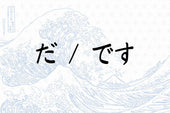
Understanding だ (da) and です (desu) in Japanese: Meaning and Usage
When learning Japanese, one of the first things you’ll come across is だ (da) and です (desu). These words don’t have a ...
-

Difference Between 及ぶ (およぶ) and 達成する (たっせいする)
Both 及ぶ and 達成する can relate to "reaching" or "achieving" something, but they have distinct nuances and usage contexts...
-

JLPT N5 Study Guide: A Beginner's Roadmap to Acing the Test
If you’ve just started learning Japanese and are aiming to ace the JLPT N5, you’ll need a solid study guide to help y...
-

Beginner's Guide to Japanese Particles: Learn the Basics
TL;DR: Japanese particles are crucial for structuring sentences, acting like conjunctions or prepositions in English...
-

JLPT N5 Vocabulary List - All 748 Words You Need to Know
Vocabulary is the foundation of any language, and Japanese is no exception. The more you know, the better. Over time ...
-

JLPT N4 Kanij List - All 176 Characters You Need To Know
After mastering the JLPT N5 kanji, you're ready to take your Japanese kanji game to the next level. JLPT N4. Let's go...
-
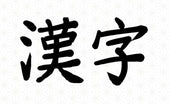
Kanji For Kanji - 漢字
Inception time. Which kanji compose the kanji of "kanji"? The kanji for "kanji" is actually pretty straightforward. I...
-

How to Memorize Katakana Easily: 9 Tips for Beginners
For those diving into Japanese, mastering hiragana and katakana is the first significant challenge. While hiragana o...
-

Complete Hiragana and Katakana Chart With All 112 Characters
The very first step for everybody who wants to learn Japanese is to study the hiragana and katakana chart (before lea...
-
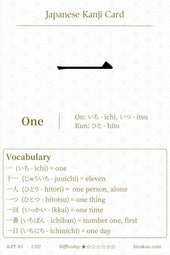
JLPT N5 Kanji: Kanji For One 一 (ichi)
Probably one the most simple kanji to remember, the kanji for 'one' is simply written '一'. Let's see its readings and...
-
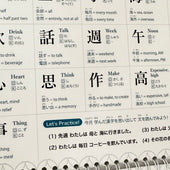
How Long Does It Take to Learn Kanji? A Beginner's Guide
Ask any Japanese student what's the scariest part of learning the language, and they'll say kanji. And they're righ...
-

Is it Necessary to Learn Kanji? The Last Answer You'll Ever Need
Many beginners in Japanese wonder whether they should really learn kanji. I know this, because I also wondered when s...
-

How Long Does it Take to Learn Hiragana and Katakana?
As a beginner in Japanese, your first step is diving into the alphabets of Hiragana and Katakana. These are the build...
-

13 Best YouTube Channels to Learn Japanese, From Beginner to Intermediate
YouTube can be an incredible resource for learning Japanese. And best of all, it's free. So we've compiled a list of ...
-
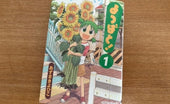
Top 10 Manga for Japanese Language Learners: From Beginners to Intermediates!
If you're learning Japanese, chances are you're interested in manga. So instead of reading texts about Tanaka-san s...
-
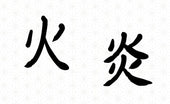
Kanji für „Feuer“ auf Japanisch: 火 oder 炎?
Willkommen zu unserer aufschlussreichen Erkundung des japanischen Kanji! Heute entfachen wir unser Verständnis ein...
-

Der vollständige Leitfaden zu Ländernamen auf Japanisch: Sagen Sie sie richtig und sprechen Sie sie richtig aus!
Egal, ob Sie eine Reise planen, Japanisch lernen oder einfach nur wissen möchten, wie verschiedene Länder in einer an...
-
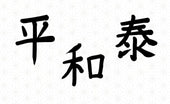
Kanji für Frieden: 平, 和, 泰 – Die Symbole der Harmonie
Sie fragen sich vielleicht, was die japanischen Symbole für „Frieden“ sind. In diesem Artikel tauchen wir tief in ...
-
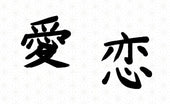
Kanji für „Liebe“: Wie und wann man 愛 und 恋 verwendet
Willkommen auf unserer Reise in die Welt des japanischen Kanji! Heute beschäftigen wir uns mit einem der herzerwär...
-
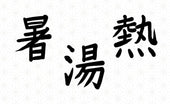
Kanji für „Hot“ auf Japanisch: 暑, 湯 und 熱 – Ein umfassender Leitfaden
Willkommen auf unserer Reise in die Welt des japanischen Kanji! Heute werden wir uns mit einem spannenden und wese...
-
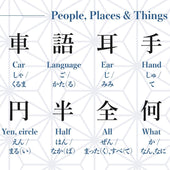
JLPT N5 Kanji-Liste – Alle 112 Zeichen, die Sie kennen müssen
Wenn Sie sich zum Ziel gesetzt haben, die JLPT N5-Prüfung zu bestehen, ist eines sicher: Ein fester Umgang mit Kanji ...

![と – Linking 'And', 'With', and Quotations in Japanese [JLPT N5]](http://hirakan.com/cdn/shop/articles/to-and-with-quotation.jpg?v=1763265110&width=170)
![で – Marking Where and How an Action Happens in Japanese [JLPT N5]](http://hirakan.com/cdn/shop/articles/de-where-how-action-happens.jpg?v=1763264973&width=170)
![へ – Marking Direction ‘Toward’ in Japanese [JLPT N5]](http://hirakan.com/cdn/shop/articles/he-marking-direction.jpg?v=1762667986&width=170)
![に – Marking Time, Destinations, and Recipients in Japanese [JLPT N5]](http://hirakan.com/cdn/shop/articles/ni-marking-destination.jpg?v=1762667846&width=170)
![の – Possession and Noun Linking in Japanese [JLPT N5]](http://hirakan.com/cdn/shop/articles/no-possession-and-noun-linking.jpg?v=1761961297&width=170)
![を – Marking the Direct Object in Japanese [JLPT N5]](http://hirakan.com/cdn/shop/articles/o-direct-object.jpg?v=1761960990&width=170)
![が – Marking the Subject ('Who/What') in Japanese [JLPT N5]](http://hirakan.com/cdn/shop/articles/ga-subject-marker_60f30f70-6ca5-47ee-9a00-3646195d7d3c.jpg?v=1761386355&width=170)
![は (wa) – Topic Marker and Contrast in Japanese [JLPT N5]](http://hirakan.com/cdn/shop/articles/wa-topic-marker.jpg?v=1761385996&width=170)
![じゃない・ではありません – Expressing 'Is/Was Not' in Japanese [JLPT N5]](http://hirakan.com/cdn/shop/articles/janai-dehaarimasen_2594963b-531e-4f4d-a9b0-361010e0a720.jpg?v=1760865884&width=170)
![だ・です/だった・でした – Saying ‘to be’ in Japanese [JLPT N5]](http://hirakan.com/cdn/shop/articles/da-desu-datta-deshita_58bbc732-53fd-48da-83c7-4e477e7cc0b2.jpg?v=1760864506&width=170)























